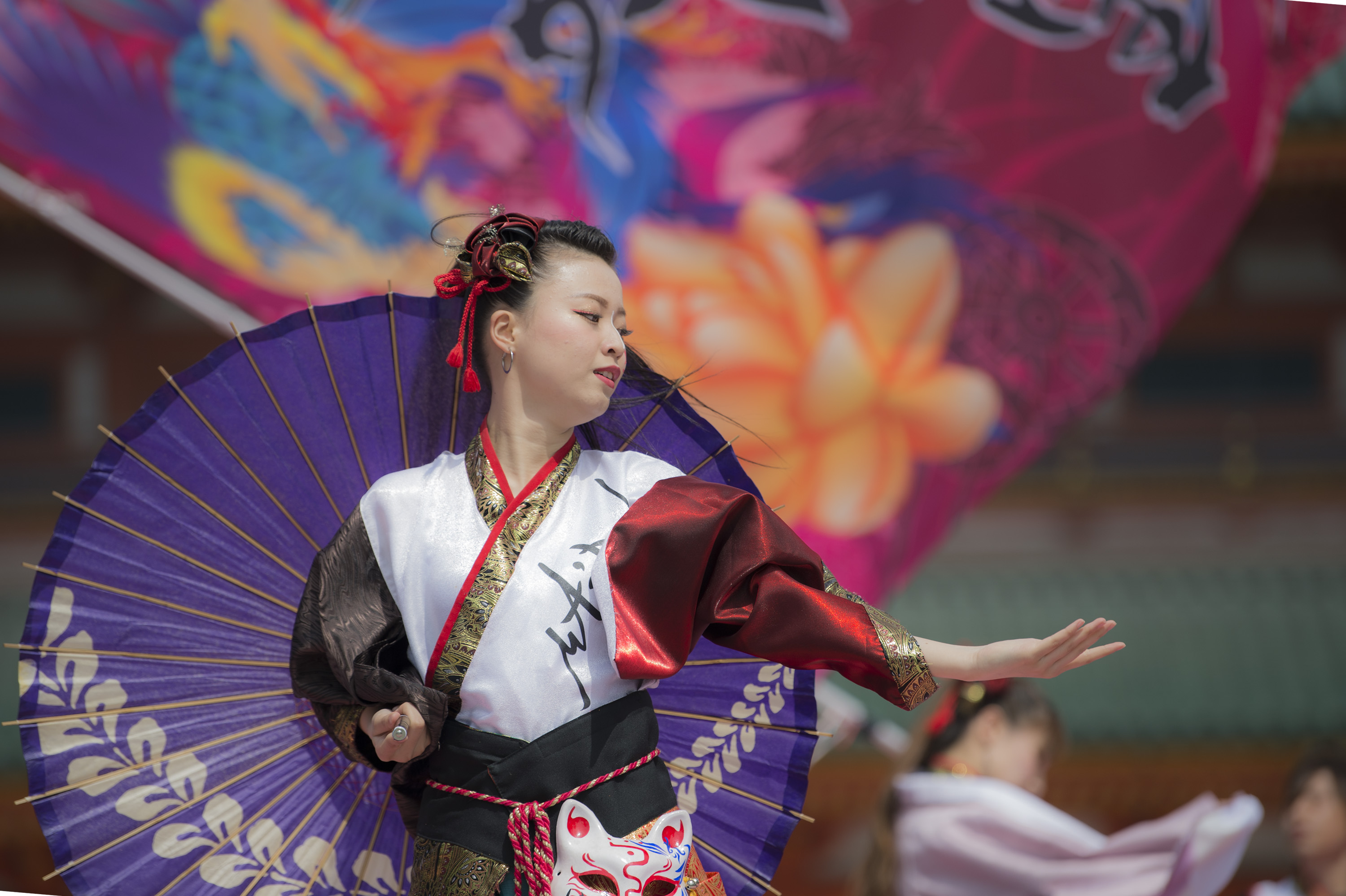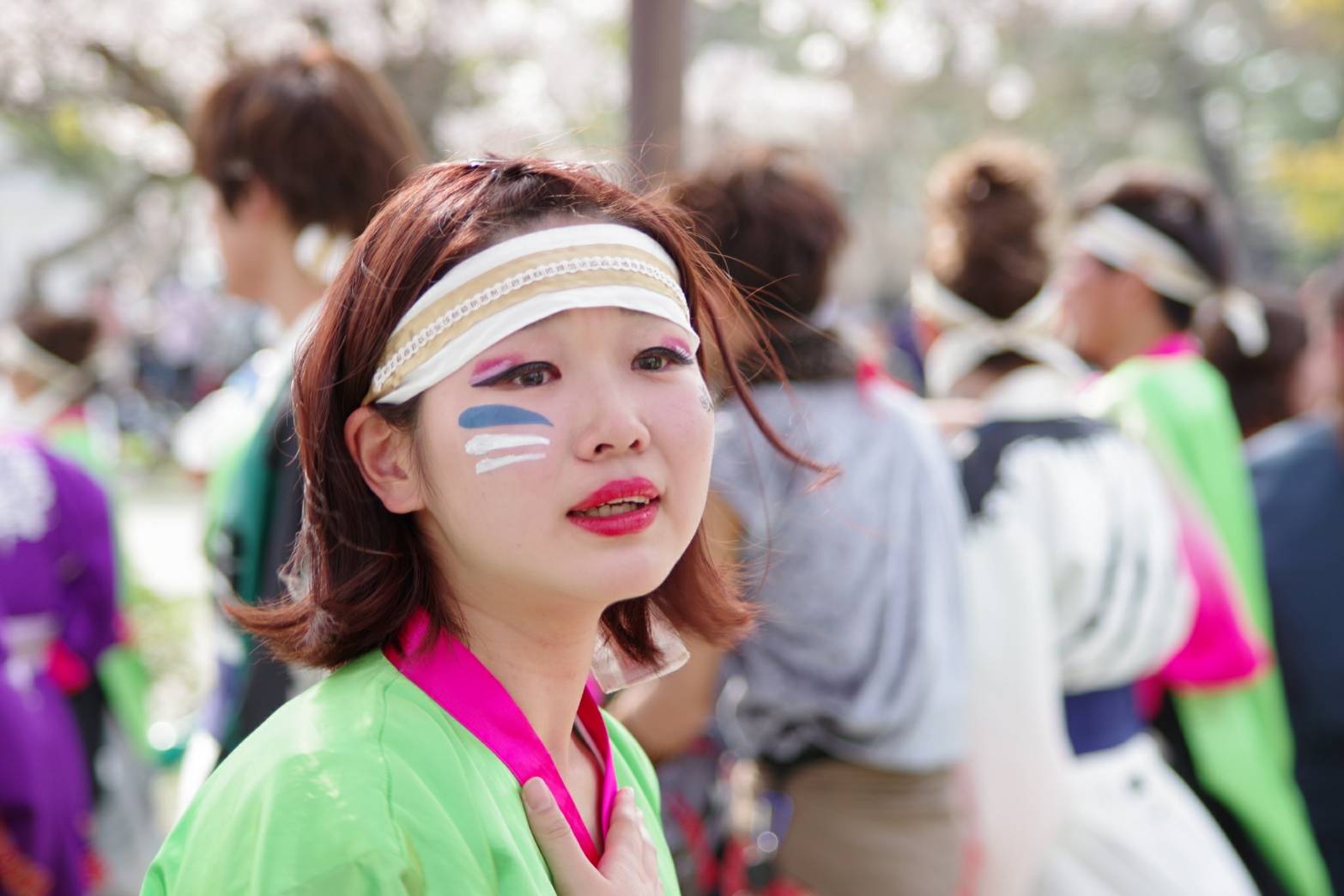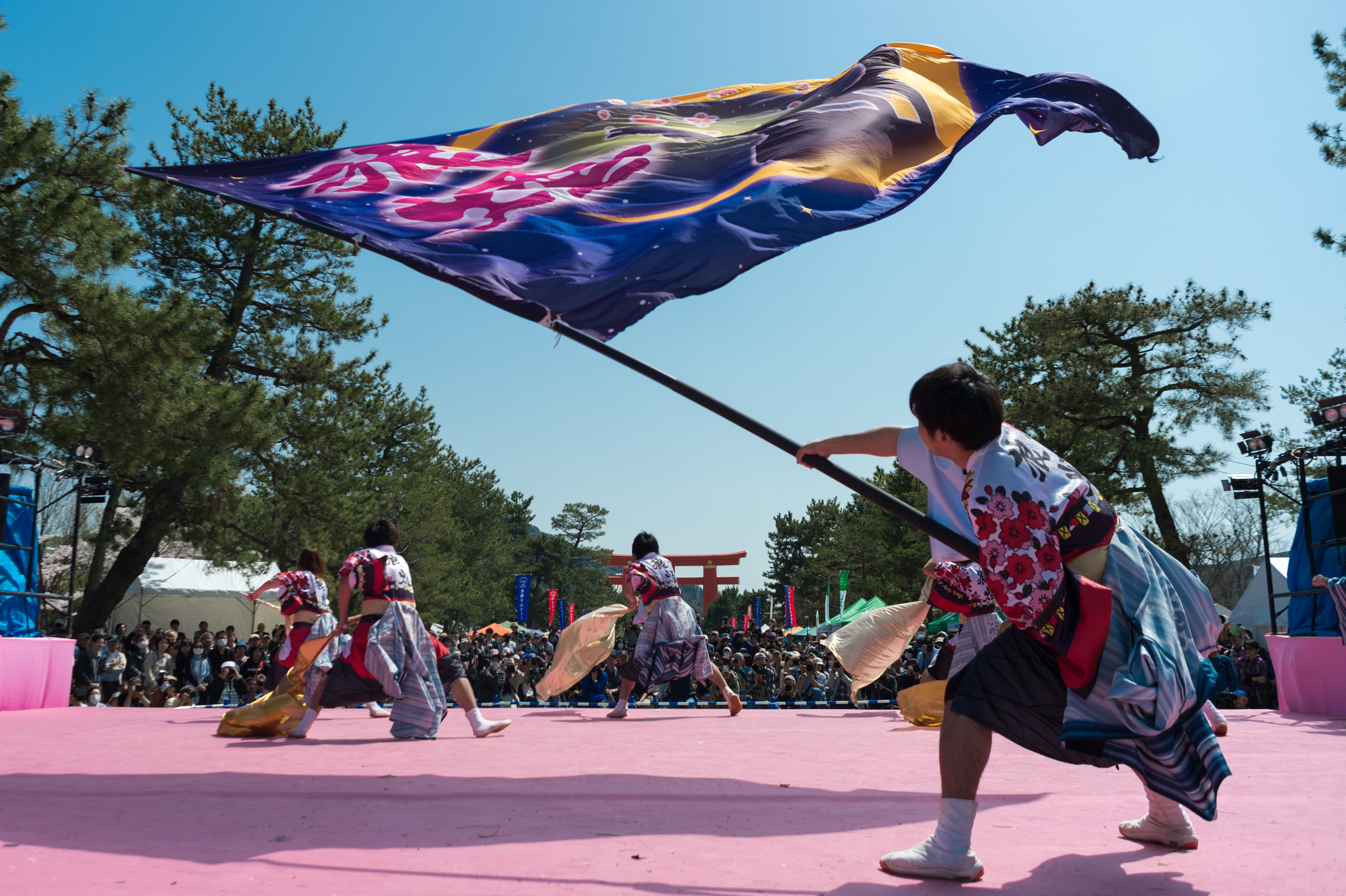
The “Yosakoi Festival” began in Kochi City, Kochi Prefecture, in 1954 to promote economic revival and regional development in the midst of the postwar recession.
Even today, the festival is held every year from August 9 to 12 as a representative summer festival of Tosa.
Dancers, holding Naruko (musical instruments) and dressed in elaborate costumes, lead colorfully decorated Jikatasha, sometimes dancing violently, sometimes glamorously, at 16 venues in Kochi City.
And 50-plus years after its birth–
The unique performances of Yosakoi festivals have spread throughout Japan, and nearly 220 “Yosakoi-style” festivals have been held, attracting an estimated total of 10 million spectators.
Among them, the Yosakoi Soran Festival in Sapporo, Hokkaido, which was created in the Heisei period by fusing Kochi Prefecture’s Yosakoi-bushi and Hokkaido’s Soran-bushi, is the largest of its kind in Japan.

Performance Format
There are two main types of Yosakoi performances: “team performance” and “general dance.
There are two types of “team performance”: stage style and parade style.
At the stage style venue, you can fully enjoy the powerful performance of the team.
In the parade style venue, you can see team performances one after another, led by a truck equipped with a sound system called a jikatasha, which is unique to yosakoi.
The “So Odori” is a light and lively dance song that one cannot help but dance to, with simple choreography that can be danced while watching, even if one has never danced before, and can be enjoyed by both spectators and dancers alike.

The Five Elements
1.Naruko
Originally invented based on the “sparrow threat” of the rice paddies, the Naruko is the symbol of the Yosakoi Festival.
The traditional color scheme is vermilion, black, and yellow, but recently various shapes and colors of Naruko have appeared, creating a gorgeous appearance in combination with the team’s costumes.
2.Gikatasha
This is a vehicle equipped with sound equipment that will lead the parade performance while playing the team’s music.
3.Costumes
Dancers’ costumes, including kimono, yukata-based costumes, and happi coats, vary greatly depending on the team’s performance style. Because they are the first thing people see, the team’s particular style shines through.
4.Music
The music also shows the individuality of the team. Arrangements vary from team to team, incorporating local folk songs or expressing original concepts and stories.
5.Choreography
The essence of yosakoi lies in how each team expresses its own dance style using costumes and naruko within the limited length of the piece.
